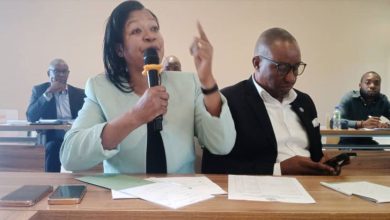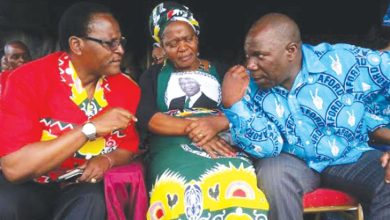Pupils scramble for textbooks
Sights of children scrambling for textbooks shows how Malawi’s free primary education policy opened doors for high enrolment without matching investment for requisite teaching and learning materials.
This brings into question policymakers’ ambitious talk about inclusive and equitable quality education, as outlined by the Malawi 2063 and the United Nations’ Sustainable Development Goal (SDG) four.
The widespread failure to provide basic learning props has left a generation in limbo.
At Mzimba Primary School, Standard Six learner Linda Banda, 12, has grown up scrambling for scarce textbooks with her classmates.
She was visibly relieved when Old Mutual donated some textbooks for Standards Five to Eight last month.
“We were facing a severe shortage of textbooks, especially for English and Chichewa,” said Linda. “Teachers were encouraging us to borrow some from former pupils, but this only favoured a lucky few with connections.”

The learners struggled to learn without reading materials.
Teachers sometimes grouped learners around the handful text books in sight.
“This wasn’t a lasting solution,” says the girl. “It’s hard to grasp the lessons while fighting for space to read books with some pages missing.”
Headteacher Joseph Kaweya Chirwa says the 2 338 learners at his constrained school, founded by Simeon Mvula in 1918, is a beacon of resilience.
“We’ve taught without learners’ textbooks for eight years, relying only on teachers’ guides. We also lack classrooms and staff houses, forcing most to rent substandard houses far away,” he says.
The shortages prompted education authorities in the district to appeal for external support and Old Mutual intervened as part of its 70th anniversary in the country.
Old Mutual marketing and corporate affairs executive Patience Chatsika says: “The company recognises the significance of investing in education as it is a crucial driver of socioeconomic and industrial growth.
“Education is also a critical pillar in achieving the SDG and the Malawi 2063 vision.”
Old Mutual donated various learning materials, including Chichewa, Science, English, and mathematics textbooks for standards five to eight.
The financial services firm extended the K15.5 million book aid to Malembo Primary School in Lilongwe.
Chirwa envisions a brighter future for the pupils.
He states: “Despite the challenges, we’ve been working hard and producing great results. Last year, we sent 10 learners to national secondary schools and 16 to Mzimba Secondary School. We also achieved the top position among 521 schools in Mzimba.”
“With the addition of textbooks, I’m confident that our performance will significantly improve and we’ll surpass our previous achievements.
The Ministry of Education uses the Educa t i on Management Information System (Emis) to identify and close resource gaps in primary schools.
Emis data clerks constantly visit schools and interview headteachers to track key indicators, including t extbook avail abil i ty, teacher absenteeism, dropout rates and promotion rates that highlight where assistance is needed urgently.
The ministry’s chief basic education officer Laurent Alfonso says the 2023 Emis Data showed an alarming shortage of textbooks, with up to 15 learners sharing a single book in some schools.
The worst-hit subjects were life skills and social studies.
“In 2022, we procured 421,000 for senior primary levels and this year we plan to procure 300 000 for upper primary levels,” he says.
Alfonso adds that the ministry is working to digitalise the curriculum as part of the current review to make it more sustainable and accessible to learners.
Civil Society Education Coalition executive director Benedicto Kondowe says the neglected acute textbook shortage erodes the quality of education.
“If ordinary textbooks are in short supply, what happens to learners who require braille materials?” he asks.
Kondowe says while digitising the curriculum sounds promising, it is not a feasible solution for all schools and learners, especially the rural majority hit hard by poverty and low access to smartphones.
He states: “In an ideal world where advanced digital technologies are accessible to all, this is the way to go. But currently, we need a balanced approach, investing in both digital and hard copy resources.




